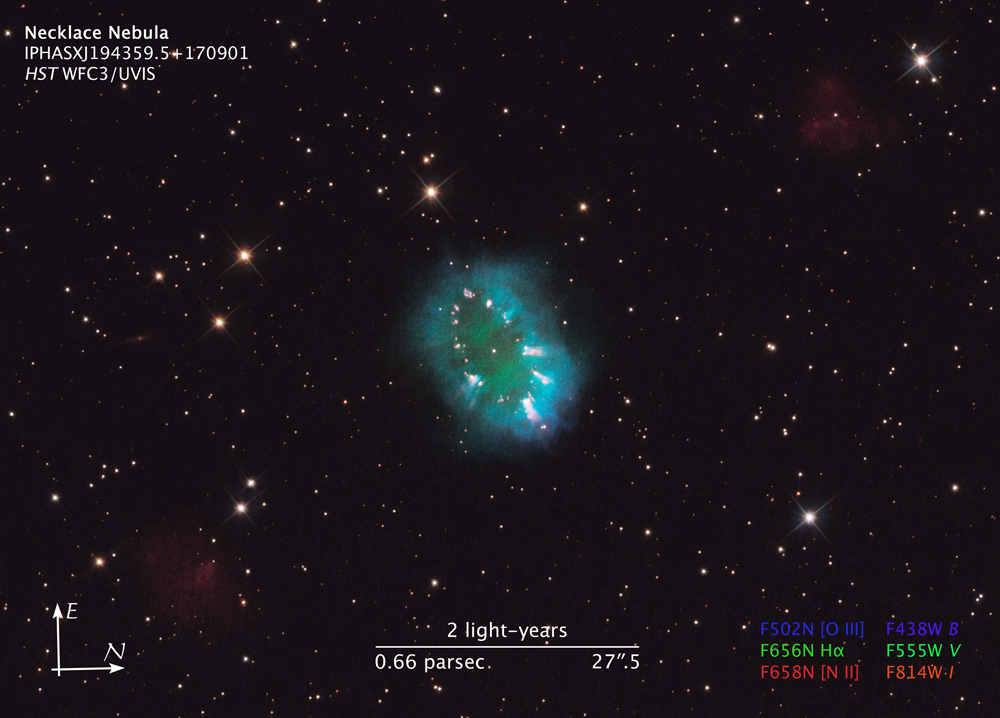The nebula consists of a bright ring, measuring 12 trillion miles across, dotted with dense, bright knots of gas that resemble diamonds in a necklace. The knots glow brightly due to absorption of ultraviolet light from the central stars.
The Necklace Nebula is located 15,000 light-years (4,600 parsecs) away in the constellation Sagitta (the Arrow). In this composite image, taken on July 2, 2011, Hubble's Wide Field Camera 3 captured the glow of hydrogen (blue), oxygen (green), and nitrogen (red).
The Necklace Nebula, PN G054.2-03.4, is located at R.A. 19h 43m 59s.50 Dec. +17° 09' 01".08.
This image was created from HST data from proposal 12675: K. Noll, Z. Levay, M. Livio, C. Christian, H. Bond, L. Frattare, M. Mutchler, T. Borders, and W. Januszewski (Hubble Heritage Team/STScI) on July 2, 2011. Exposure time 44 minutes.

Colors: This image is a composite of many separate exposures made by the WFC3/UVIS instrument on the Hubble Space Telescope using six different filters, three broadband filters, and three narrowband filters. The color results from assigning different hues (colors) to each monochromatic image. In this case, the assigned colors are: F502N ([O III]), F438W (B) blue
F656N (H-alpha), F555W (V) green F658N ([N II]), and F814W (I) red. Credit: NASA, ESA, and the Hubble Heritage Team (STScI/AURA)






Comments